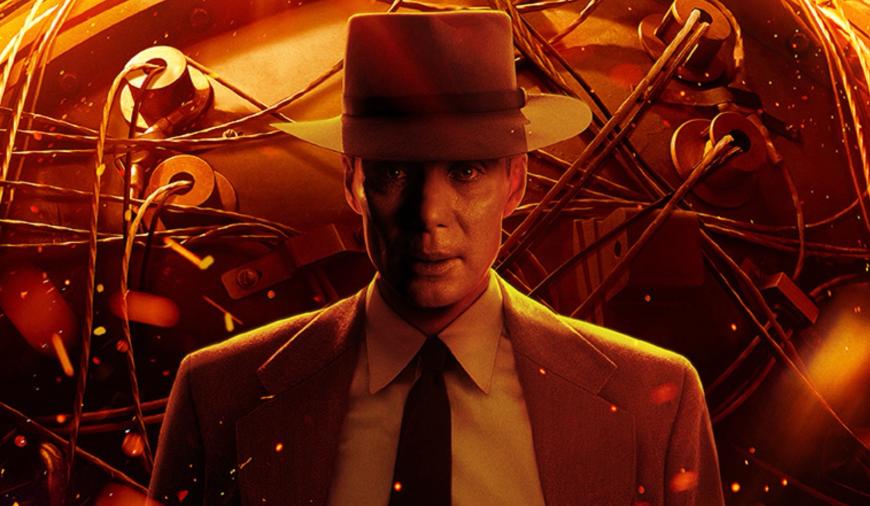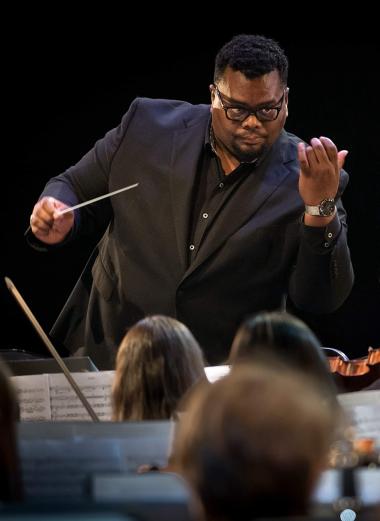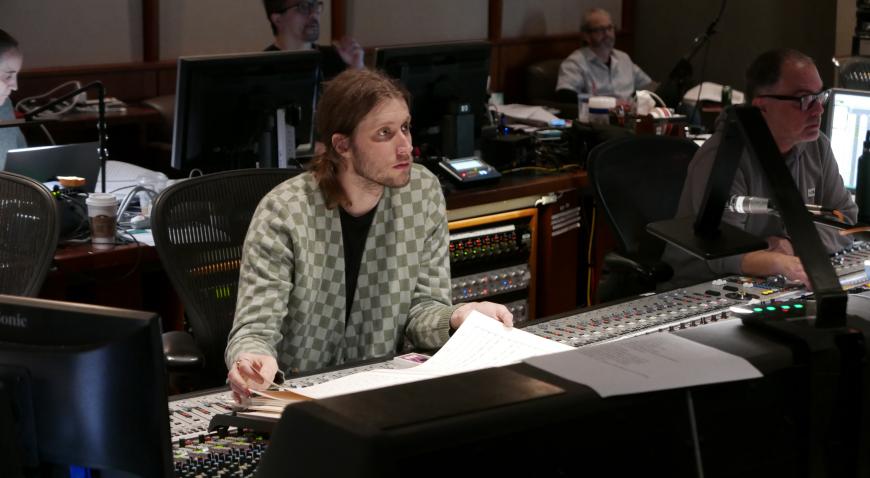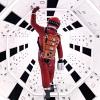
How do you convey the inner turmoil of a tortured but outwardly stoical man, a scientist who plays his emotional cards very close to his vest?
If you’re Oppenheimer director Christopher Nolan, one answer is to cast a superb actor like Cillian Murphy, who can subtly convey a character’s internal conflicts.
But another, equally important element is music — for this film, the soundtrack created by Ludwig Göransson. Using a large contingent of violins plus synthesizers, the Swedish composer (who wrote the Academy Award-winning score for Black Panther) has produced a relentless, highly intense score for Oppenheimer, one that — among other things — reveals the qualms the titular physicist was unable or unwilling to express.
“Sometimes it’s music’s responsibility to highlight the interior motives of a character, even if they’re not expressing it,” said conductor Anthony Parnther, who will lead a live performance of the score to accompany a screening of the film on Jan. 10 in UCLA’s Royce Hall. “I think Ludwig does a great job of doing so in Oppenheimer.”

For Parnther, the concert marks a return to the film. He conducted the original soundtrack. “If I remember it correctly, we recorded it during five days of double sessions at Warner Bros.,” he said in an interview.
“It was quite a technical feat to make certain cues work — in particular, one that requires the orchestra to play an undulating set of notes faster and faster, seamlessly. We worked with that throughout the week to perfect it.
“It was quite a challenging dance to get all the steps right on when we did it in the studio. Now we have the pressure of doing it live, for over 2,000 people.”
One thing Parnther has going for him: His orchestra for the concert will include “a lot of the same musicians” who played on the soundtrack. “So there will definitely be some familiarity.”
As the conductor noted, “the score carefully blends orchestral and non-orchestral elements.” For the concert, the track featuring those other elements will have already been laid down; Parnther and his players will simply have to keep up with it.
“For the orchestra, there is a metronomic click for each of the cues,” he said. “There is a lot of pressure. There is no room for any technical misfires.
“I just did Star Wars: The Last Jedi with the Cincinnati Symphony. I was able to artfully phrase the orchestra [while fitting the music to the visuals]. But with this, we have to perfectly execute it technically.”
Göransson’s second collaboration with Nolan (following the 2020 film Tenet), the Oppenheimer score is notable for its ticking clocks, stomping feet, and imitations of the sounds of a Geiger counter. But the major musical elements are conveyed primarily by the violins — which, Göransson told Vanity Fair, was Nolan’s idea.
“Chris was interested in taking the traditional sound [of the violin] and turning it on its head,” the composer said. “My wife Serena is a very accomplished violinist, and so we [would] go to the studio and experiment.”

One result of this investigation is that Göransson “employs nontraditional techniques such as tapping or hitting the body of the violin with the bow,” composer Alison Cole, a lecturer in screen composition at the Sydney Conservatorium of Music, wrote in The Conversation.
“When these traditional and nontraditional performance techniques combine, the juxtaposition creates tension between the warm and more brittle sounds of the violin.”
That’s exactly what Göransson was going for.
“With a solo violin, you can play the most beautiful, romantic vibrato,” the composer told another interviewer. “But then if you press down the bow heavily and change the speed, you can make it something horrific, manic, or neurotic in a split second.”
Oppenheimer employs that split personality masterfully to keep viewers on edge. As Parnther noted, “there are moments in the score that are heart-wrenchingly beautiful.” But often, they are juxtaposed with others that are deliberately disconcerting.
Of course, Göransson is not the first film composer to utilize this approach. Cole points to Bernard Herrmann’s classic strings-only score for Alfred Hitchcock’s Psycho, in which “the short, sharp screech of the violins played in repeated clusters punctuates the rising tension. This is echoed in Oppenheimer: To underscore the visuals of atoms spinning, Göransson layers string harmonics in an escalating crescendo of quivering energy.”
For Parnther, conveying all of this complexity in a live concert is an exhilarating challenge. Amid a very busy schedule — he recently conducted the New York Philharmonic and will head to Hawaii the morning after the UCLA performance to conduct Mozart and Brahms — he is excited about this event, which, he noted, sold out very quickly. “I am looking forward to heading back into the Oppenheimer world,” he said.
In an email exchange, Cole urged concertgoers — and people simply rewatching the film at home — to pay particular attention to two scenes: the opening montage for the main character and the first test explosion of the atomic bomb in the New Mexico desert.
“Oppenheimer’s opening score is rhythmically grounded and draws the audience into his complex inner world through the various moments that build to musical tension and release as the opening scene’s tempo increases,” she said. “Without percussion, the incremental increase in tempo throughout this scene gravitates more toward inducing unnerving anxiety rather than terror.”
The bomb-test scene exemplifies Göransson’s “use of silence as an expression of dread,” she added. “The film’s sounds are distilled down to the ‘naked’ sound [silence] to express the sheer gravitas of the scene. The effectiveness of this ‘empty’ onscreen sound world is the culmination of an intense build of dynamic electroacoustic layers of strings playing harmonics and rhythmic patterns that build in intensity to create a scene of anticipation — of no turning back.”
This swirling mixture culminates, she added, in “the moment of silence when the button is pushed. The score falling silent is as crucial as the music itself.”




